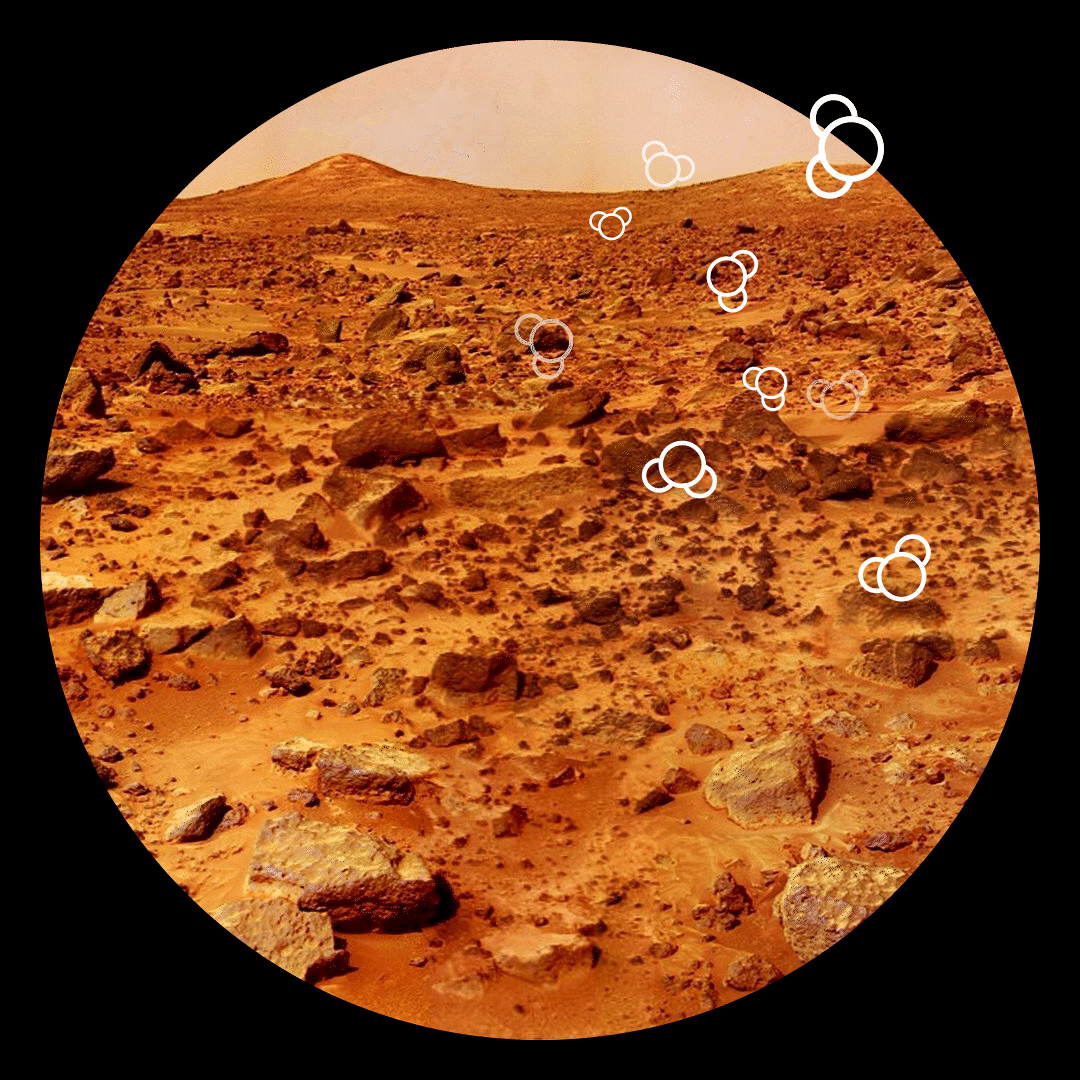
Understanding Mars by studying Earth
Our research focuses on geochemical changes across Mars’ history. We use rocks and soils collected from extreme environments here on Earth to serve as analogs for Martian conditions.
Major themes in our research
A few of our favorite projects!
Is there water on Mars?
Follow the cryosalts!
The extreme conditions on Mars do not allow stable liquid water on the surface. However, salts can depress the freezing point of water well below 0 °C, forming liquid salty brines depending on their specific deliquescence/efflorescence features.
While Ca-chlorides can melt the ice ~-49 °C, Ca-perchlorate salts can form the liquid brines ~-69 °C. Chlorides, chlorates, perchlorates and sulphates are distributed all over the planet Mars. What if we look for these salt mixtures inside of martian analogue soils? Could we still form and stabilize the transient liquid salty brines on the martian near surface? What is the role of the martian regolith?
To resolve this, we use martian analogues collected from Antarctica, Hawaii and the other extreme environments on Earth to understand the martian (geo)chemistry. We use vibrational spectroscopy to detect the phase changes of water and cryosalts inside the martian analogue soils and salt mixtures from (i) permafrost to (ii) slush, followed by (iii) thin water films formed between grains then to the (iv) dried state of minerals.
Carbon dioxide and methane binding and release in martian analogues
We study how martian analogue minerals, and the thin water-ice films they host, alter the fate of CO2 in terrestrial environments and potentially on the planet Mars. Our previous studies showed us that the formation and stabilization of the (bi) carbonate species in the martian analogue minerals commonly found on Mars (e.g. iron (oxy)hydroxides, aluminosilicate clay minerals) depend on the temperature.
We are continuing these studies with new martian analogue soils to understand the environmental factors that effect methane release. Would you like to explore the effect of atmospheric gas adsorption on the martian analogues with us?
Martian aqueous (geo)chemistry observed by the Mars Reconnaissance Orbiter (MRO) instrument
We are searching for all possible water signatures on Mars including the cryosalts (e.g. chlorides, perchlorates), martian analogue minerals and rocks (iron-rich oxides, sulphates and clays), CO2 and briny ices on the martian poles. We use the CRISM data that reveals the possible visible and near-infrared spectroscopic signatures of water from the dusty martian surface and shows the water-associated geological features (e.g. lakes, ponds). We also use the High Resolution Imaging Experiment (HiRISE) camera images to track the ongoing martian surface processes and landscape evolution (e.g. Recurring Slope Lineae (RSL) features).
Martian subsurface cryosalt expansion and collapse as trigger for landslides, Science Advances, 7(6), eabe4459 (2021).

Why this work matters
We are tackling some of the biggest questions in space exploration today
Are we alone in the universe? How do we look for life on other worlds? Can other planets foster human existence? Our research sets the course for the next generation of space exploration through rigorous understanding of what life needs and where we might find it.







